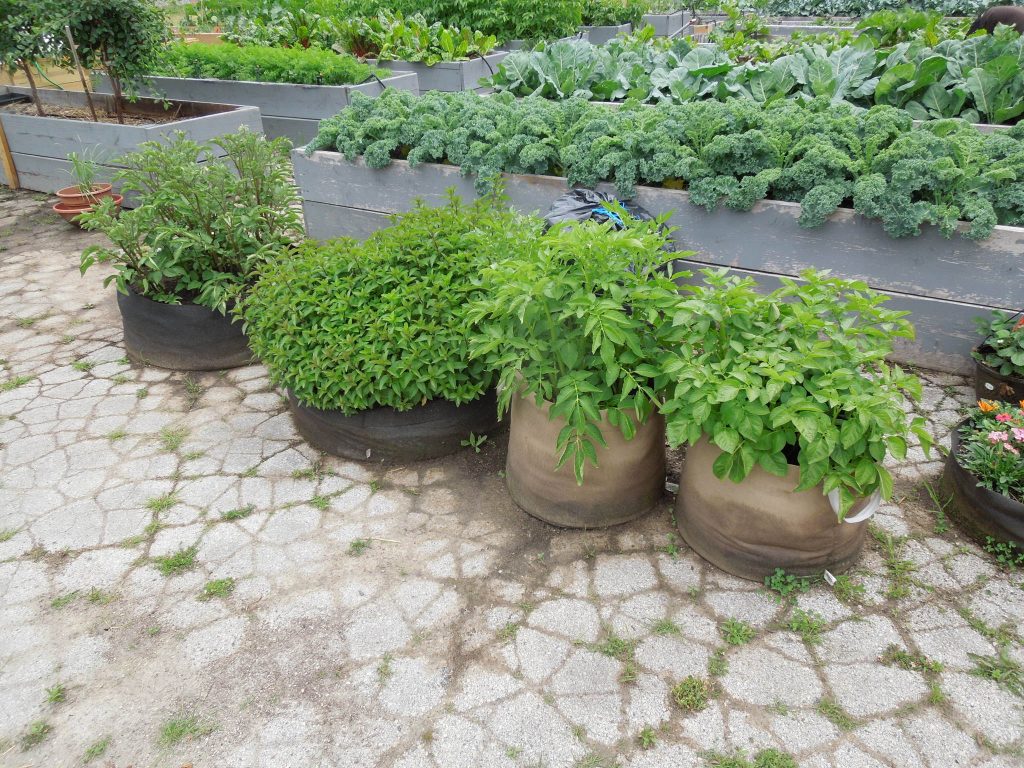
Features
Retail
Small-space containers are big with new gardeners
April 13, 2021 By Kelly Allsup, Horticulture Educator, Illinois Extension
 Soft-sided grow bags are great options for growing vegetables if gardeners don’t have space to grow in the ground. Photo credit: Ken Johnson.
Soft-sided grow bags are great options for growing vegetables if gardeners don’t have space to grow in the ground. Photo credit: Ken Johnson. When victory gardens returned last spring, long gone were acre plots with rows and rows of vegetables.
Instead, a new generation of gardeners who were interested in home cooking and food access grew herbs and small-scale varieties in backyard strips, patios, or balconies.
During the pandemic, 16 million people, many under the age of 35, started gardening, according to the Garden Media Group.
“We expect these new gardeners will continue growing in 2021,” says the author, Kelly Allsup, a University of Illinois Extension horticulture educator based in Bloomington, Ill. “Most will likely be growing their own vegetables, fruits, and herbs in small spaces like raised beds, containers, and grow bags.”
Allsup says produce from lettuces to peppers can be grown successfully in a variety of containers. Gardeners are only limited by their imagination, willingness to experiment, and availability of drainage holes. Whether choosing standard patio containers or fabric grow bags, each vegetable has unique minimum size needs.
For example, tomatoes need a container that is at least 20” in diameter at the top, while leafy greens only need a 10” diameter container.
The diameter of the top of the container is the “Minimal Pot Size.” Container heights are usually categorized as “standard” or “azalea.’ Azalea pots are shorter and ideal for plants with minimal roots such as herbs. When in doubt, standard pots are recommended for growing vegetables.
These are the container sizes and amount of soil recommended for some common container plants.
- Minimal pot size: Tomatoes >20”, Peppers >16”, Carrots >12”, Radish, Onion, Beets, Leafy Greens, Herbs and Flowers > 10”.
- Soil Volume by pot size: 10″ = 3 gallon, 12″ = 5 gallon, 14″ = 7 gallon, 16″ = 10 gallon, 18″ = 15 gallon, 24″ = 25 gallons, 30″ = 30 gal.
Containers do well with spinach, Swiss chard, beets, kohlrabi, kale, eggplant, peppers, carrots, potatoes, tomatoes, radishes, and herbs such as cilantro and basil. Some vegetables are better off in beds.
“We’ve learned that some vegetables, tomatoes, and squash, for example, are not well suited for containers,” Allsup says. “But the green industry has created smaller varieties that can grow in smaller soil volumes.”
Here are a few container suitable vegetables: ‘Micro Tom’ tomato, ‘Dwarf Yellow Crookneck’ squash, ‘Romeo’ ‘Short Stuff’ carrots, ‘Baby Ball’ beets, ‘Mexican Miniature’ watermelon, ‘Striped Guadeloupe Fairy Tale’ baby eggplant, ‘Tom Thumb’ peas, ‘Mini White’ cucumbers, ‘Kitchen Minis’ bell peppers and tomatoes, and ‘Huckleberry’ potatoes.
There are also fruits for container growing. Bushel and Berry is a series of berries described as “patio perfect.” They grow shorter but may have cold hardiness issues.
‘Raspberry Shortcake’ fruits in late June, while ‘Baby Cakes Blackberry’ produces a crop its first year in September and its second year in July.
Print this page